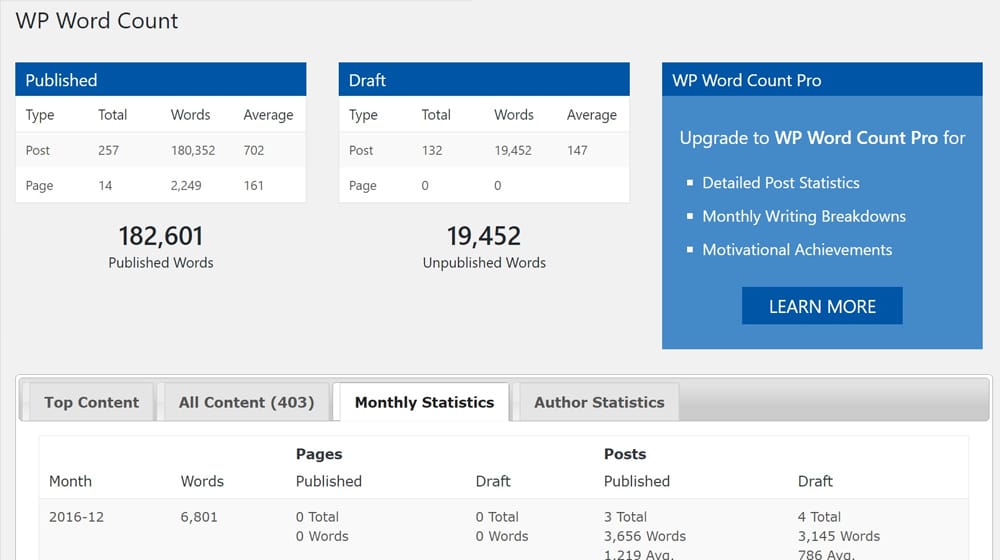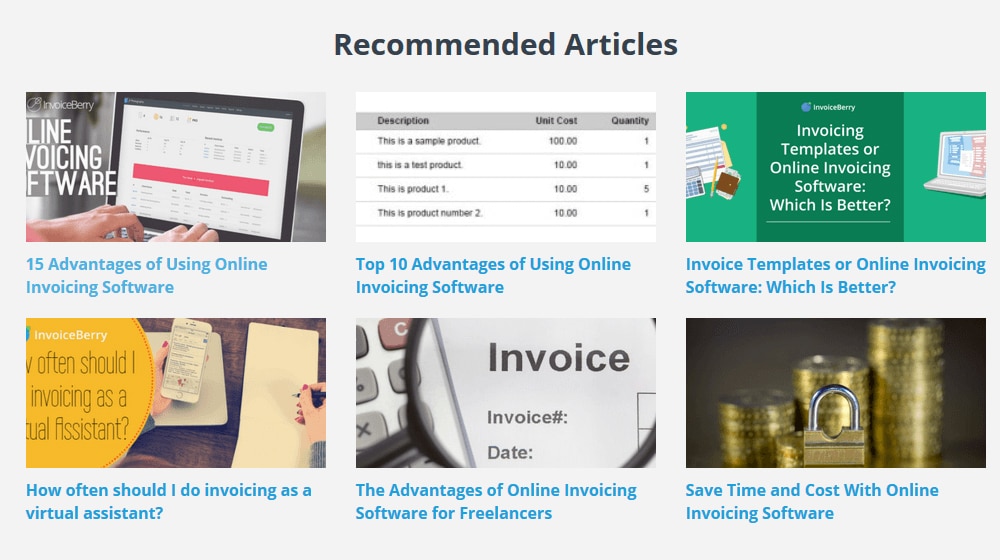15 Methods to Increase a Blog Posts Return on Investment

Whenever you invest something into your business, you want returns. Some, like organic SEO, are difficult to track. Simply applying best practices for meta data will improve your site performance and search ranking, but it's hard to track any specific returns unless you have a defined before and after, for example.
Other efforts can have a more defined investment. Blog writing is one such effort. "But how do I put a cost on a blog post?" you might ask.
It all depends on how you're producing your content. If you're buying the content from a freelance writer, a content mill, or a professional content agency, it's easy; just record the cost of producing that post. If a freelancer charges you $300 for a post, there's your investment. If a content marketing agency charges you $2,000 for 4 posts per month, you can easily do that division.
If you're producing the content yourself, you need to establish three things: how long it takes you to produce a piece of content, how much you value your time, and how much value those blog posts are providing (through visitors, sales, SEO benefits, organic links, etc). This can be tricky, of course, since it means doing some introspection and some calculations into your analytics and the value of your own time, but those are useful numbers to know for a variety of reasons.
Once you have the baseline cost of your content, you can start to track how much of a return on investment it's giving you. And there, of course, comes the follow-up: how to improve the return on that investment.
So how can you boost your blog post ROI? Luckily, there are a lot of options. Here are fifteen I've been using for years.
 30 Second Summary
30 Second Summary
You can improve your blog post ROI in several important ways. You have to add social sharing buttons that your readers actually use and create strong calls to action in each post. You should write longer content (2,000+ words) since it keeps readers on your site longer and ranks better. You'll get better results when you add internal links, use related post plugins and include multimedia like videos. You can also update old content, merge similar posts and do link building outreach to get more value from existing content.
While some people argue that social sharing buttons aren't worth it, I've found that people do actually use them. Yes, they can slow down a site if you're not using a top-tier plugin. Yes, a lot of people prefer to share their links manually rather than with a button. Still, those people who do use the buttons prefer to have them. Providing more options for users to share your content means more users are going to share your content.

You can, of course, do your own testing. I definitely prefer a fast, high quality plugin like Social Warfare over a lot of the free options. I also recommend not using individual social share counts, both because they can disappear without notice, and because low numbers can cause a suppressive effect. On top of that, try to only display the social network buttons for networks your users actively use. Otherwise, it just becomes bloated. Oh, and ditch the "print" button, no one under 80 uses it these days.
2. Optimize Your Call to Action
Every blog post should have a call to action. Your goal with a post is to get people to come to your website from an external link or from Google search results. Your secondary goal is to keep people on your site for as long as possible, which is what several other tips on this list are aimed at doing. Your third goal is to convert users into customers, which is where the real return on your investment comes from.

Thus, you need a call to action in each blog, whether it's pointing to a specific service, a specific product, or just your business landing page in general. You might even be able to use sidebars, floating trays, and other independent calls to action instead of one specifically in the text. The point is to workshop and optimize your call to action, to choose the best offer and the best prompt.
Getting more people to subscribe to your newsletter is generally a good marketing practice. Other forms of marketing rely on other sites to link to you, or a site like Google to send traffic your way. These are good, but fickle; you don't control them, and they can disappear without warning. A newsletter, meanwhile, is completely your domain. You aren't beholden to any company who can pull the rug out from under you.
Now, it's hard to calculate the specific ROI of newsletter subscribers, but it can be done. Figure out how much a subscriber is worth to your business, and then you can take steps to optimize your newsletter opt-in process. The more people sign up through your posts, the better your post ROI.

You can, of course, also take steps to optimize your newsletter for better return on its investment. That improves the value of your newsletter, which then improves the value of the blog posts that get people to sign up for said newsletter. That's a topic for another post another time, though.
4. Add, Monitor, and Reply to Blog Comments
There's an ongoing discussion over whether or not blog comments are worthwhile. Some people argue that they aren't worth the hassle. If a post only gets a single comment, but you have to spend hours moderating spam and watching out for abuse, it's not worthwhile. Conversely, if you're getting tens or hundreds of comments, you're probably getting a lot of value out of it.

I wholeheartedly encourage blog comments. See, the thing is, Google treats blog comments as part of the blog post. The more insightful, high quality comments you have, the more "content" you have on your page. If you have a deep, valuable discussion in the comments, that's a lot of additional value for your post. Neil Patel takes advantage of this quite heavily, as do several other big-name bloggers. You can do it too.
Encourage blog comments by asking for them in your posts and by fostering a community of people willing to have discussions. Monitor those comments to remove spam. Most importantly, actively reply and hold discussions with the people who respond. This build an engaged audience and lots of extra content on every post.
5. Write Longer Content
Just like how blog comments add extra value to a post, so too does a longer post. Years ago, my go-to length for a blog post was around 900 words. That gradually expanded to around 1,200, and I saw improvements in performance, both organically and in terms of sales.
Then I did an experiment, and switched to 2,000-word long posts. Everything shot up; conversions, time spent on site, search rankings, anything you can think of. I've stuck with it ever since.

Longer content provides more room for everything you want out of a post. It has more room to provide valuable information, instructions, and calls to action. It encourages people to spend more time on your site and exposes them to more links to other posts they might want to read. Longer content also requires you to be aware of what you're writing and to structure it better, and it's easier to out-do the competition when you spend more time on a subject.
Sure, it takes more time or more money to produce longer content, but the value of that content outweighs that additional investment. After all, when you're on a roll writing, it's easier to add another 500-1,000 words than it is to figure out where to stop.
6. Use Internal Linking
One of the best ways to improve the ROI of your blog posts is to keep people on your site for as long as possible. One of the best ways to do that is with internal linking.
In general, I try to aim for 1-3 internal links per post, or about one every thousand words for longer posts. Internal links are great for showcasing how much of an industry information leader you are.

In particular, I like mentioning a topic offhand as a related topic to something I'm discussing, and then linking to that post. For example, in the section above about the length of content, I might link to a post I wrote in more detail about the ideal length of content. Higher up, in the first section about social sharing buttons, I might link to a post about the top social sharing plugins I recommend. You know, that kind of internal linking.
Another way to get people to stick around on your site is to use a related posts plugin. These plugins are fantastic; they create a box with an image, title, and preview of other content on your site, dynamically generated for the user. When Neil Patel does consulting for massive corporations that pay him tens of thousands of dollars, one of the first thing he does is install a related posts plugin on their posts to skyrocket their performance. It's that simple.

We create blog content that converts - not just for ourselves, but for our clients, too.
We pick blog topics like hedge funds pick stocks. Then, we create articles that are 10x better to earn the top spot.
Content marketing has two ingredients - content and marketing. We've earned our black belts in both.
Often, these plugins take into consideration metrics like which posts on your site perform the best, which topics are related to one another, and which posts the user has already seen, if it can track them. Not all plugins are that advanced, of course.
The one drawback to a related posts plugin is that there are a lot of native advertising companies, like Taboola or Outbrain, which use the related posts format for sponsored links. A lot of users are getting less and less likely to click on related posts simply because they end up leading to clickbait ads more often than not. If you're using a related posts plugin, you're probably going to want to do as much as you can to make users certain it's actual, real content on the other end.
8. Add Video and Multimedia
Video in particular is a very good addition to blog posts, if you can make it without investing too much. The problem with video is the high barrier to entry, though the barrier has been dropping a lot over the last few years.
Video can be used to augment the content of a post, or you can make a video version of the post and embed it for the people who would rather watch than read a transcript. This was an effective technique for Moz's Whiteboard Friday articles, for example.

One of the biggest benefits of video is that it keeps people on your site. Time spent on site means those people are more exposed to other incidental calls to action and other links they might want to check out. Plus, you can use video to include other calls to action and even product placement for added benefit.
9. Merge Similar Articles
While a lot of my tips above have been focused on building up more ROI for posts as you're writing them, you can also increase the ROI of old posts that have languished on your site for months or years.
One of my favorite techniques is to look for 2-3 old posts on similar subjects. If they are all worthwhile on their own, you can use them as the base to create one larger mega-article.
For example, let's say I have three different posts on WordPress plugins. One on, say, the best WordPress SEO plugins, one on the best WordPress plugins for e-commerce, and one for the best WordPress themes. All of them likely have some solid backlinks and, since they're mostly evergreen, they might have some lingering traffic, even if they're a year or two old.
Create one new post that combines the information from each of them, and redirect the old URLs to the new one. Update the information if necessary. Boom! Now you have one, new, mega-resource post to draw in all of the benefits of the old ones, plus new traffic, new links, and new fans.
10. Create Directory Articles
Another great technique you can use once your blog is a few years old is to create centralized directory or "table of contents" articles.

Using the example of the WordPress articles above, maybe I don't want to merge them all. Maybe I want to keep them all separate. One great option, then, is to create a new article titled "The Ultimate Guide to WordPress Blogging". In that article, I would cover every aspect of WordPress, from hosting to frameworks and themes to plugins to the quirks of the Gutenberg editor and so on.
Then, I would go back through my backlog of content and pull out every worthwhile post about WordPress. In each relevant section, I would write a paragraph about the topic being covered in one of those articles, and link to that article from the central post. If a topic comes up that should be covered but that I haven't covered yet, I can link to an external resource, or I can use that as an opportunity to write a new piece of content covering that topic.
11. Repurpose Content
Another way to get more value out of your blog posts is to take a post and convert it into other kinds of content.

A blog post can be used for a variety of different formats for more content saturation.
- Pare down the blog post and convert it into a slide deck.
- Use the blog post as a script and record it as a podcast or audio version.
- Use the audio as a base and create a video version of the post.
- Use the pared-down version of the post as a key outline for an infographic.
All of these different forms of content are comparatively easy to make once you have the basic content down, which you will from the blog post. You can post them on different kinds of directories and content hosts, like YouTube, any of the hundreds of podcast directories, and infographic directories. It's a great way to get your information and your branding out there, and also build links back to your primary content.
12. Do Link Building Outreach
Reaching out to build links is one of the best ways to build value and ROI for your blog posts. On the one hand, you get more links to the blog post, and since it's timely and relevant, that refers people who then get caught in your web. You can get new subscribers, new followers, new conversions, and new social media shares from these links.

At the same time, every new link to your site is ongoing benefit for months and years to come. The better your link profile is – with varied sources of all levels of quality and type of link – the better your SEO will look. The more you get, and the faster you get them, the sooner you'll reach critical mass and start to snowball.
Moz has a good guide on a link building pipeline that you can read and put into practice for immediate and long-term benefits.
13. Guest Post to Mention Your Content
Guest blogging or guest posting is one of the best ways to get more links, traffic, and value to your name and your brand. Unfortunately, since it's an ancient technique, there are thousands of articles written about it, many of which haven't been updated in years and may still offer outdated or downright negative advice. Some are still good, though.
My recommendation for guest blogging, if I had to distill it down to a single paragraph, is to make sure whatever you're writing shows off your knowledge and expertise. You want your topic to be somehow related to something you've written before, so you can link back to your own content in a way that is not commercial, but adds benefit to the reader. You're simply citing your sources; not your fault you're the source, eh?
14. Syndicate Content
Content syndication can be a good way to build recognition, traffic, and links, but it's also tricky to do right.

You have to make sure you're willing to let your content be posted on other sites, and that you can still get value out of it, which generally means restricting the links in said content to internal links, so syndicated copies link back to you. You also have to make sure the site doing the syndication is properly canonicalizing your content. It's not a good technique for everyone, but if you can pull it off, it can work quite well.
15. Keep Content Updated
Possibly one of the best tips for boosting blog ROI is keeping your old evergreen content up to date. If it's an evergreen topic, it's easy to simply update. Old plugins die, recommend new plugins. Old services merge, recommend new services. Best practices change, update your guides. It's all about providing the best information to your users possible.
If you do most or all of the tips on this list, you should be able to significantly boost the ROI of your blog posts. Which leads me to my final question, for you: what techniques have you found to have the best effect? Let me know in the comments.



 30 Second Summary
30 Second Summary


November 23, 2019
good info. do you have any tools or recommendations to measure ROI?
November 23, 2019
Hi Ibrahim! If you have an idea of your average conversion cost, or are able to pass real conversion values to Google, setting up Google Analytics Goals is a good way. This will let you pass dollar amounts of each sale (or the average value of a lead or sale) to Google so you can determine which posts are resulting in the most goals. After installing more call to actions and doing things to increase your ROI, you can then measure your increase in sales in your Google Analytics goal charts. I just wrote a new post on call to action plugins which will definitely help boost the ROI of your posts. Hope this helps! Feel free to drop me an email through our contact page if you need more help with this.
January 06, 2021
I see people mention repurposing a lot, but yours is the first that gave me the idea to turn my articles into podcasts. Kudos for that!
January 08, 2021
Hey Elizabeth,
Thanks for letting me know what helped you specifically!
You might like our other guide we wrote on starting a podcast on your blog:
https://www.contentpowered.com/blog/guide-starting-podcast-blog/
Keep it up, and I'm glad this guide helped you 🙂